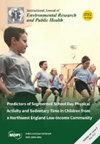大流行病背景下的包容性危机传播:快速回顾
3区 综合性期刊
Q1 Medicine
International Journal of Environmental Research and Public Health
Pub Date : 2024-09-16
DOI:10.3390/ijerph21091216
引用次数: 0
摘要
背景:非母语人士或文化水平低、社会经济地位低和/或有听力或视力障碍的人可能无法像其他公民一样轻松地接受危机传播。本快速综述旨在从形式、渠道和外联等方面综合分析用于改善包容性大流行病相关危机传播的策略的证据。方法:经过全面搜索、严格筛选和质量评估,本综述选取了 12 项比较研究。对数据进行了分析,并通过叙述性表格对现有效果进行了结构化报告。结果研究结果表明,较高的信息频率(在任何渠道)都可能导致较低的回忆率,视听产品和定制信息在某些情况下被证明是有价值的,而初级保健医生似乎是大多数公民群体最信任的信息来源。对于那些提前获知所宣传的预防和治疗措施的效果可能存在例外情况的公民来说,信任度更高。结论:本综述通过提供证据,说明在与 COVID-19 相关的政府危机公关中,如何消除少数群体和其他未得到充分服务的目标受众所经历的感官、语言、文化和文字障碍,以应对无效的公关推广所带来的与健康相关的社会成本,从而为消除信息不平等做出贡献。本文章由计算机程序翻译,如有差异,请以英文原文为准。
Inclusive Crisis Communication in a Pandemic Context: A Rapid Review
Background: Crisis communication might not reach non-native speakers or persons with low literacy levels, a low socio-economic status, and/or an auditory or visual impairments as easily as it would reach other citizens. The aim of this rapid review was to synthesize the evidence on strategies used to improve inclusive pandemic-related crisis communication in terms of form, channel, and outreach. Methods: After a comprehensive search and a rigorous screening and quality assessment exercise, twelve comparative studies were selected for inclusion in this review. Data were analyzed and represented by means of a structured reporting of available effects using narrative tables. Results: The findings indicate that a higher message frequency (on any channel) may lead to a lower recall rate, audio–visual productions and tailored messages prove to be valuable under certain conditions, and primary healthcare practitioners appear to be the most trusted source of information for most groups of citizens. Trust levels were higher for citizens who were notified in advance of potential exceptions to the rule in the effect of preventive and curative measures promoted. Conclusions: This review contributes to combatting information inequality by providing evidence on how to remove the sensorial, linguistic, cultural, and textual barriers experienced by minorities and other underserved target audiences in COVID-19-related governmental crisis communication in response to the societal, health-related costs of ineffective communication outreach.
求助全文
通过发布文献求助,成功后即可免费获取论文全文。
去求助
来源期刊

International Journal of Environmental Research and Public Health
Medicine-Public Health, Environmental and Occupational Health
CiteScore
7.30
自引率
0.00%
发文量
14422
审稿时长
1 months
期刊介绍:
International Journal of Environmental Research and Public Health (IJERPH) (ISSN 1660-4601) is a peer-reviewed scientific journal that publishes original articles, critical reviews, research notes, and short communications in the interdisciplinary area of environmental health sciences and public health. It links several scientific disciplines including biology, biochemistry, biotechnology, cellular and molecular biology, chemistry, computer science, ecology, engineering, epidemiology, genetics, immunology, microbiology, oncology, pathology, pharmacology, and toxicology, in an integrated fashion, to address critical issues related to environmental quality and public health. Therefore, IJERPH focuses on the publication of scientific and technical information on the impacts of natural phenomena and anthropogenic factors on the quality of our environment, the interrelationships between environmental health and the quality of life, as well as the socio-cultural, political, economic, and legal considerations related to environmental stewardship and public health.
The 2018 IJERPH Outstanding Reviewer Award has been launched! This award acknowledge those who have generously dedicated their time to review manuscripts submitted to IJERPH. See full details at http://www.mdpi.com/journal/ijerph/awards.
 求助内容:
求助内容: 应助结果提醒方式:
应助结果提醒方式:


